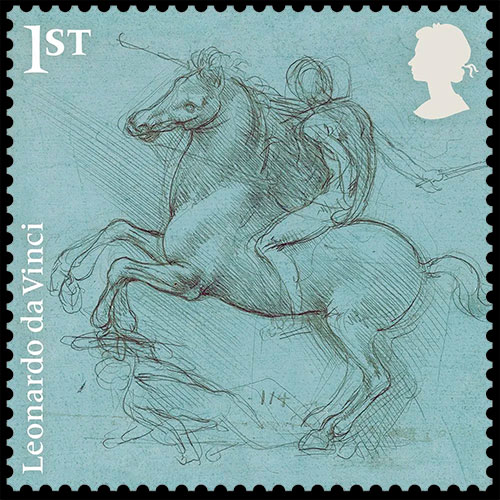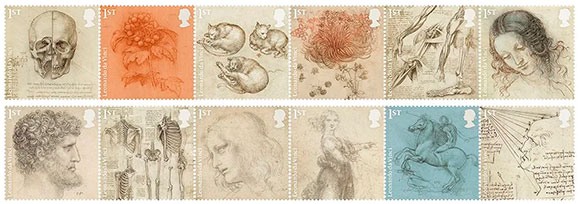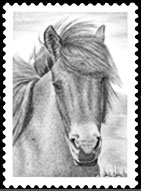
On February 13, 2019, Royal Mail released a series of drawings by the renowned master to mark the 500th anniversary of Leonardo da Vinci's death.
Leonardo da Vinci was a great Italian artist, sculptor, architect, scientist, and inventor, one of the greatest figures of High Renaissance art.
Leonardo da Vinci created only about 20 paintings, but a vast number of his drawings, sketches, and blueprints have survived. A significant collection of approximately 600 of the artist's drawings is housed in the Royal Collection at Windsor Castle Library. The drawings date from between 1478 and 1518. The collection is believed to have been acquired by King Charles II around the 1690s.
To mark the 500th anniversary of Leonardo da Vinci's death, 144 of his finest drawings from the Royal Collection Trust will be on display in 12 museums and galleries across the United Kingdom throughout 2019. From February 1 to May 6, 2019, 12 unique drawings will be displayed in each of the 12 rooms, before being brought together for an exhibition at the Royal Gallery in London.

The stamps in the series feature twelve drawings from this collection: portraits, anatomical drawings, and sketches of plants and animals. One of the stamps in the series reproduces a sketch for an equestrian statue depicting a rider on horseback.
In fact, Leonardo da Vinci's drawings include many sketches of horses. It is known that in the late 1400s, the artist worked on a colossal equestrian statue of Francesco Sforza for the Duke of Milan, Ludovico Sforza. From 1482 until at least 1499, Leonardo da Vinci meticulously worked on every aspect of the sculpture: sketching horses, spending many days in the stables of Sforza and other nobles, trying to find the ideal angle and proportions, and also working on the technical aspects of casting such a large statue.
Initially, according to surviving sketches, Leonardo da Vinci planned to create a statue of a rearing horse. To properly distribute the weight, the artist attempted to create a third point of support by placing a fallen warrior under one of the horse's legs. It is possible that a drawing of this version of the statue is depicted on the postage stamp.
Later, Leonardo da Vinci abandoned such a complex task and opted for a more traditional composition: the horse calmly striding with one front leg raised. The artist spent four years sketching and preparing the work. Leonardo then began making a clay model. The clay statue, depicting a single, riderless horse, was erected in front of the Palazzo Sforza. However, the artist was unable to complete the work and cast the statue in bronze due to the war with France. All the collected bronze (approximately 60 tons) was requisitioned for military purposes and used to cast cannons. As a result, Leonardo da Vinci's brilliant vision was never realized—the equestrian statue of Francesco Sforza was never cast in bronze. Only numerous drawings and sketches survive.
Перейти в каталог
I apologize for any errors or inaccuracies


